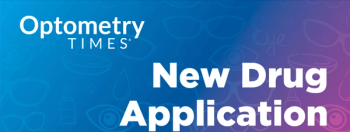
- February digital edition 2024
- Volume 16
- Issue 02
How to get the most out of topical glaucoma therapies
Pairing the patient with the right therapy can yield dramatic results.
With an aging population, optometrists will be seeing more glaucoma patients in their practices. It is estimated that approximately 3 million Americans currently are being treated for glaucoma and that number is expected to double by 2050.1 Glaucoma patients account for over 10 million office visits a year. As primary care eye physicians, optometrists need to be prepared to treat glaucoma patients. Thankfully, with increased scopes of practice in many states, this is now possible.
Optometrists outnumber ophthalmologists in the United States. According to the American Academy of Ophthalmology, the number of ophthalmologists from the 1990s to 2017, has decreased from 6.30 to 5.68 per 100,000 individuals while the number of optometrists has increased from 11.06 to 16.16.2 Thus, our ophthalmology colleagues are overwhelmed with patients, leading to increased wait times for office visits for our patients. We as optometrists need to help our ophthalmologists by working together and utilizing our knowledge and training.
Fortunately, there are currently numerous options for treating glaucoma. Over the last few years, many great surgical options have been approved. However, this article will focus on topical glaucoma therapies and how to choose the most appropriate line of treatment in an optometric practice.
To begin, the pathophysiology of glaucoma is multifactorial. It is believed to be both mechanical and vascular in nature.3 The optic nerve is composed of retinal ganglion cells (RGCs) that exit the eye through the lamina cribrosa, traveling into the optic tract and processing at the occipital cortex. When RGCs exit the lamina cribrosa, elevated intraocular pressure (IOP) can lead to compressive force, thereby stretching and damaging the axons. In addition, poor perfusion to the optic nerve can lead to ischemic damage to RGCs. Both the mechanical and vascular components lead to disruption of axoplasmic flow and RGC death.
Before starting treatment, establish a T-max and, if possible, a diurnal curve. I like to vary appointment times for my glaucoma patients for each visit, so a patient with a morning appointment would schedule an afternoon follow-up. This allows me to capture IOL fluctuations throughout the day.
Treatment for glaucoma primarily focuses on reducing IOP. To do so, 2 mechanisms of actions are utilized: aqueous suppression and reducing resistance to aqueous outflow.
Aqueous production occurs in the epithelial cells of the ciliary body and is secreted by the ciliary processes. Topical glaucoma agents that target aqueous suppression are β-blockers, α2 adrenergic agonists, and carbonic anhydrase inhibitors. Common examples are timolol, brimonidine, dorzolamide, and correlating combination drops.
Aqueous outflow occurs through 2 pathways: the trabecular meshwork and uveoscleral outflow. Topical glaucoma agents that target aqueous outflow resistance through the uveoscleral pathway are the prostaglandins. Topical glaucoma agents that target aqueous outflow resistance through the trabecular meshwork are Rho kinase inhibitors and nitric oxide (NO) therapy.
Prostaglandins are typically used as the first line of topical therapy given once a day and reduce IOP by around 25% to 30%.4 However, choosing a topical agent that reduces aqueous outflow resistance through the trabecular meshwork is the most efficacious choice: 70% to 80% of aqueous outflow resistance is from the trabecular meshwork vs 20% to 30% from the uveoscleral pathway.5 So the prostaglandin is reducing only a small percentage of the overall aqueous outflow resistance.
Therefore, to maximize efficacy, a great option to begin with would be netarsudil 0.02% (Rhopressa; Alcon).
Netarsudil inhibits Rho kinase enzymes. These enzymes increase actin/myosin contraction, stress fibers, and adhesions, leading to increased rigidity and resistance through the trabecular meshwork. Thus, inhibiting Rho kinase enzymes leads to relaxation of the trabecular meshwork and Schlemm’s canal and vasodilation of episcleral vessels, all with the convenience of once-a-day dosing. Plus, there is some thought that netarsudil may lead to permanent remodeling of the trabecular meshwork.6 This is something to consider especially in younger glaucoma patients who will be on treatment for many years.
Newer to the market is netarsudil and latanoprost ophthalmic solution 0.02%/0.05% (Rocklatan; Alcon) entered the market. Netarsudil and latanoprost ophthalmic solution targets aqueous outflow resistance in both the trabecular meshwork and uveoscleral pathways by combining a Rho kinase inhibitor with a prostaglandin. The drop combines all of the above benefits of netarsudil 0.02% with the added reduction of aqueous outflow resistance through the uveoscleral pathway. It is arguably one of the most efficacious topical therapies on the market with the convenience of once-a-day dosing.
Latanoprostene bunod ophthalmic solution 0.024% (Vyzulta; Bausch + Lomb) is another great option. It combines the therapeutic effect of a prostaglandin with an NO molecule, which acts as a signaling molecule for vascular regulation. In glaucomatous eyes, NO at the cellular level of the trabecular meshwork is disrupted, leading to rigidity and increased aqueous outflow resistance. Therefore, combining NO with a prostaglandin not only targets the uveoscleral pathway but also helps to relax the trabecular meshwork at the same time.
Going back to the pathophysiology of glaucoma, most of the above topical agents are addressing only the compressive component of elevated IOP. But what about the vascular component? Think about low-tension glaucoma patients. If the patient’s glaucoma is progressing but IOP is only 10, there are other forces at play besides compressive forces. Latanoprostene bunod ophthalmic solution 0.024% is a great option for low-tension glaucoma to extract the NO effects of increasing perfusion to the optic nerve.7 Ask these patients about other systemic conditions such as hypotension and sleep apnea. Maximizing systemic health is extremely important in low-tension glaucoma.
Moreover, studies have shown that IOP is highest in most glaucoma patients in the early-morning hours. Aqueous suppressants such as timolol or brimonidine have poor nocturnal effect8 and there is the risk of reducing perfusion to the optic nerve during this time period. So as tempting as it may be to prescribe timolol given its tolerability and cost, it does not provide even IOP-lowering effects. Using an aqueous suppressant is fine as a supplement to a topical agent that targets outflow resistance or as a supplement to a prior glaucoma procedure (eg, selective laser trabeculoplasty), but it should not be used as a stand-alone therapy.
Cost can be a prohibitive factor for some of these topical agents. However, insurance coverage has improved over time and many pharmaceutical companies offer coupons and financial assistance.
To summarize, increased IOP in glaucomatous eyes is primarily from resistance to aqueous outflow. By optimizing outflow with topical agents, there is less compressive force on the RGCs. The best agents to choose are those that act upon the trabecular meshwork (Rocklatan, Rhopressa, and Vyzulta). All of these options are once-a-day dosing, providing the most efficacy and nocturnal coverage. The second-best options are the prostaglandins, followed by the aqueous suppressants as a supplement.
Optometrists are capable of handling most cases of glaucoma and keeping these patients in our practices. We need to be able to help out our ophthalmologists as we deal with an aging population. Together we can work cohesively to provide the best outcomes for our patients.
References
Current glaucoma programs.CDC. Reviewed November 7, 2022. Accessed January 31, 2024. https://www.cdc.gov/visionhealth/research/projects/ongoing/glaucoma.htm
Feng PW, Ahluwalia A, Feng H, Adelman RA. National trends in the United States eye care workforce from 1995 to 2017. Am J Ophthalmol. 2020;218:128-135. doi:10.1016/j.ajo.2020.05.018
Weinreb RN, Aung T, Medeiros FA. The pathophysiology and treatment of glaucoma: a review. JAMA. 2014;311(18):1901-1911. doi:10.1001/jama.2014.3192
Cantor LB, Hoop J, Morgan L, Wudunn D, Catoira Y; Bimatoprost-Travoprost Study Group. Intraocular pressure-lowering efficacy of bimatoprost 0.03% and travoprost 0.004% in patients with glaucoma or ocular hypertension. Br J Ophthalmol. 2006;90(11):1370-1373. doi:10.1136/bjo.2006.094326
Goel M, Picciani RG, Lee RK, Bhattacharya SK. Aqueous humor dynamics: a review. Open Ophthalmol J. 2010;4:52-59. doi:10.2174/1874364101004010052
Keller KE, Kopczynski C. Effects of netarsudil on actin-driven cellular functions in normal and glaucomatous trabecular meshwork cells: a live imaging study. J Clin Med. 2020;9(11):3524. doi:10.3390/jcm9113524
Samaha D, Diaconu V, Bouchard JF, Desalliers C, Dupont A. Effect of latanoprostene bunod on optic nerve head blood flow. Optom Vis Sci. 2022;99(2):172-176. doi:10.1097/OPX.0000000000001842
Gulati V, Fan S, Zhao M, Maslonka MA, Gangahar C, Toris CB. Diurnal and nocturnal variations in aqueous humor dynamics of patients with ocular hypertension undergoing medical therapy. Arch Ophthalmol. 2012;130(6):677-684. doi:10.1001/archophthalmol.2011.2573
Articles in this issue
over 1 year ago
Meibomian gland dysfunction: At-home treatment devicesover 1 year ago
IKA Keratoconus Symposium: Traversing new groundover 1 year ago
What motivates you and your patients in myopia management?Newsletter
Want more insights like this? Subscribe to Optometry Times and get clinical pearls and practice tips delivered straight to your inbox.



















































.png)


